This is probably at the top of the FAQs. I was asked again today by Jake a beginner:
![]() “How do I improve my FTP via training?”
“How do I improve my FTP via training?”
Rather than go deep into the science this time, I am going to try and explain things simply (maybe over simply)….using hypothetical data from Jake if he started structured training from around 200w FTP.
In many ways “How do I improve my FTP?” is a legitimate question, because everyone discusses FTP and everyone compares FTP and therefore everyone wants to improve their FTP. However, on the other hand it is the wrong question. Do you really want a higher best effort 60min power….or do you want to be a better cyclist, do better at events, have better recovery, go faster on your bike? (I am going to skip definition issues of FTP as I covered that here)
There is no doubt that the first step is our training fundamentals. Really there is no secret here:
Slowly add more volume (hrs)
Gradually add more intensity (tss)
Build, rest and recover and repeat (periodize)
Train consistently and with an objective (goal)

That’s great but we need to talk about training method and in particular time-in-zone. If we simplify training zones we have this
Seiler z1 = low intensity = Coggan z1 z2
Seiler z2 = threshold intensity = Coggan z3 z4
Seiler z3 = high intensity = Coggan z5 z6
So what happens if we follow training in these zones?
HVLI (Base) Training
If you focus your training in z1 (or low intensity) you are likely doing base training. This is quite common in the off-season. It doesn’t mean 100% in low intensity, out of every 10 training sessions, maybe 1 would be higher than base. Also literal time spent in zone is more than just % of sessions, so the amount of time does add up if you are doing mostly Z1 and Z2.
If a beginner like Jake started training base, then their power curve would be pretty good at long endurance efforts, but not good at sprint or short VO2max effort. It might look like this:
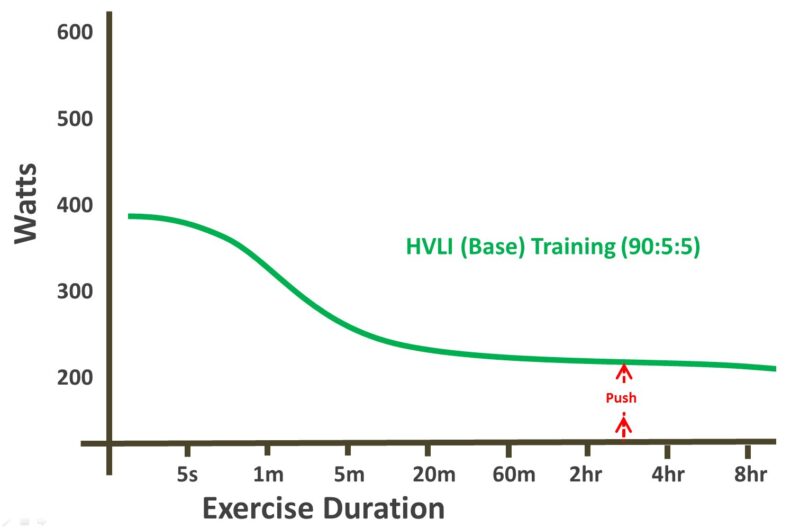
HIT (HIIT) Training
If you focus your training in z3 (or high intensity) you are likely doing high intensity interval training. It doesn’t mean 100% in high intensity, but out of every 10 training sessions, maybe 4 would be intervals, and the TIZ might be 50:10:40.
If a Jake started HIIT, then their power curve would be pretty good at sprint or short VO2max efforts but relatively weak at long endurance efforts. It might look like this:
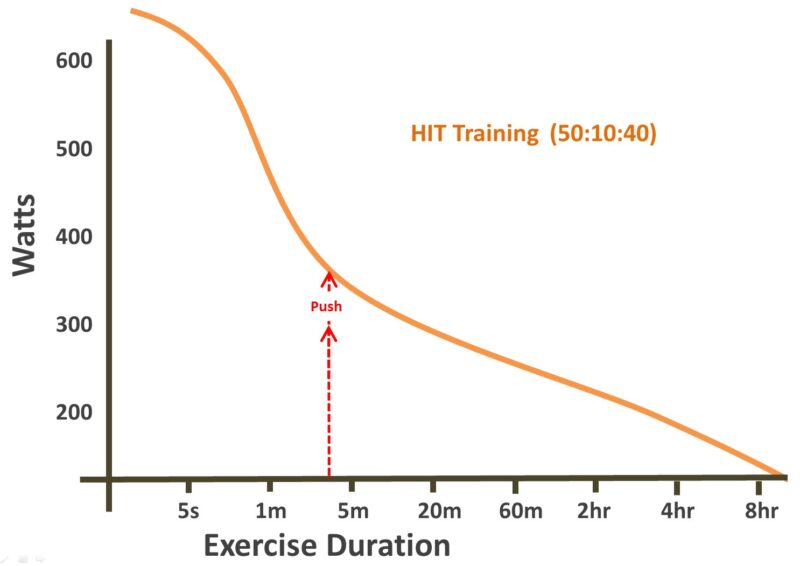
Sweetspot/Threshold Training
If you focus your training in z2 (or high threshold) you are likely doing sweetspot training (as popularized by TrainerRoad). Again, that is not 100% in sweetspot, but out of every 10 training sessions, maybe 3 would be threshold, and the TIZ might be 50:40:10
If a beginner like Jake began with sweetspot training, then their power curve would be pretty good at threshold but both sprint/VO2max efforts AND long endurance efforts might be weak. It might look like this:
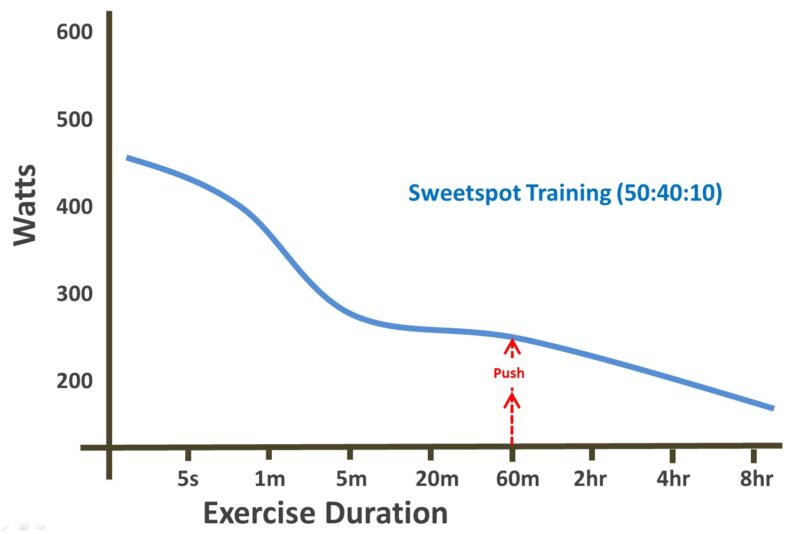
Polarized (Pol) training
What if you did not focus on any particular zone but you did more at both z1 (low intensity) AND z3 (high intensity) then you are likely doing Polarized training. Out of every 10 training sessions, maybe 7 would be low intensity, 2 high intensity and 1 threshold, and the TIZ might be 70:10:20
If a beginner started Polarized training, then their power curve would be pretty good at both sprint/VO2max efforts AND long endurance efforts and surprisingly perhaps threshold would likely be dragged up too. It might look like this:
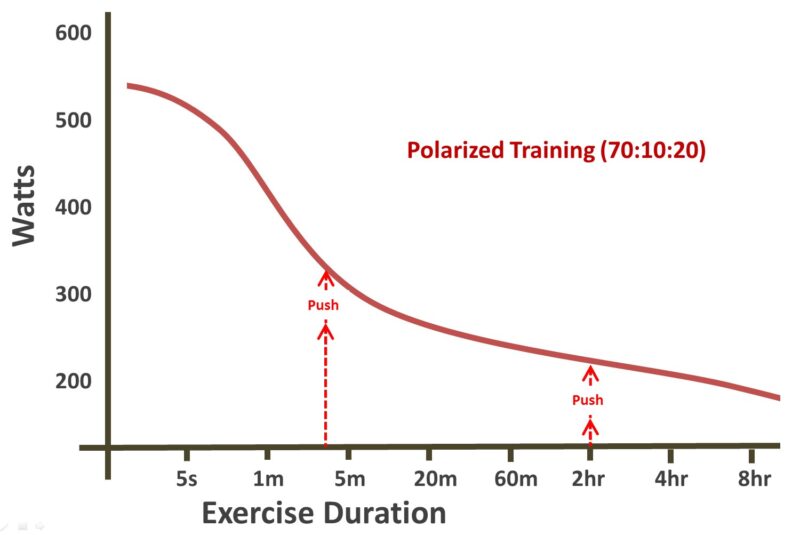
As you train in z1 and z3, you “push” the curve up everywhere
Comparison of Training Strategies
If we put all training methods together, side-by-side and gave everyone about the same volume then their power curves might look like this at the end of training (remember these curve are illustrative hypothetical examples)
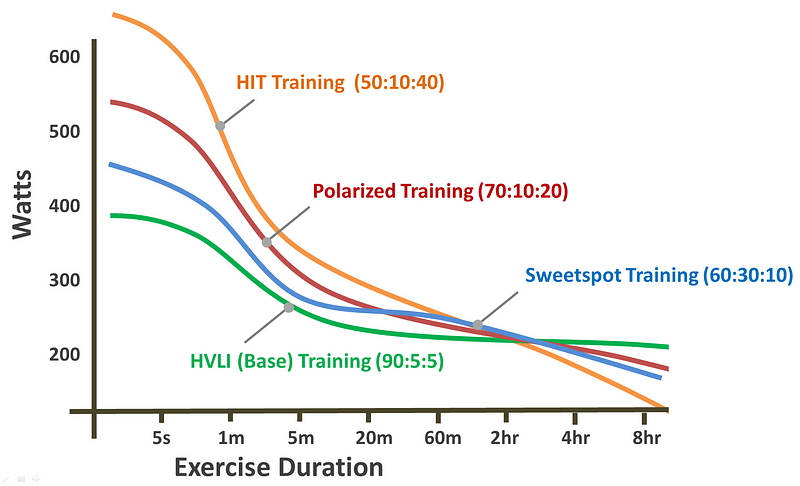
Finally, we see the differences that are likely after following these training plans. The actual numbers will differ from individual to individual depending on their background / ability / genetics / diet etc but the overall pattern will resemble this if you followed this one style of training. If you want to read up on the actual science I reviewed it here
The best gains over the entire curve would be attained via POL or HIT training, but HIT training would be hard to maintain which is the main limitation of HIT. HIT would also penalize endurance which is important to most cyclists. The worst gains would be from sweetspot or base training. That’s not to say athletes could not improve with these methods *if the training fundamentals* above were followed, it just means they are unlikely to benefit as much as their peers doing the other methods.
What about my FTP?
Now let us circle back to the question, how do I improve my FTP? Well, you follow the training fundamentals, then very likely your FTP (and power curve generally will improve); but if we get out the microscope we can zoom in on the FTP gains by training TIZ:
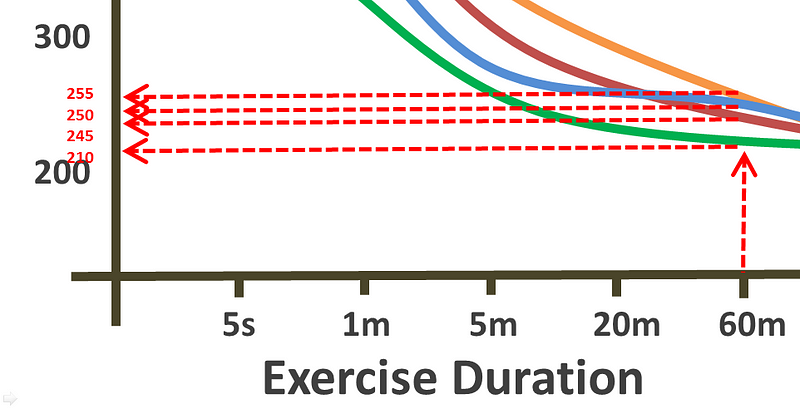
and here are the numbers…….
HIT = 255w
Sweetspot = 250w
Polarized = 245w
Base= 210w
Now we see that Base training on its own, will likely penalize the FTP (and power at all shorter periods) but that the other three methods produce similar results on the FTP. However note that sweetspot training risks boosting FTP at the expense of other abilities……so even though it is tempting to do Sweetspot for FTP gains, the question is do you want to specifically boost your FTP or do you want to become a better cyclist?
and what about VO2max as a % of FTP?
One last comparison of interest is the athletes VO2max as a percentage of their FTP (above) which is a proxy for anaerobic power divided by aerobic power (aer/anaer). This plot shows each rider’s VO2max which we will define here as a flat-out best 5min effort:
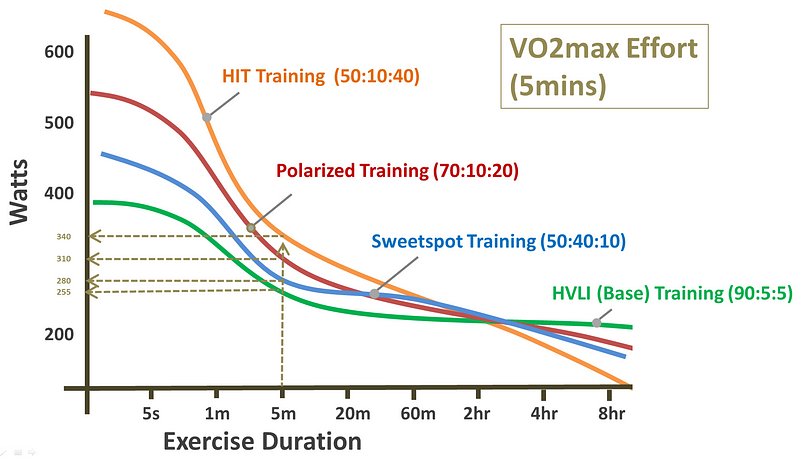
And here is the result in a simple table. HIT and polarized are likely to boost VO2max significantly, whilst sweetspot and base might not. Looked at in reverse FTP as a % of VO2max is a proxy for aerobic power/anaerobic power is high for sweetspot but this might not be helpful in itself.

And all this is close to what was found by Stöggl Sperlich is their study of training methods here (HIT had a lower VO2max effect than POL)
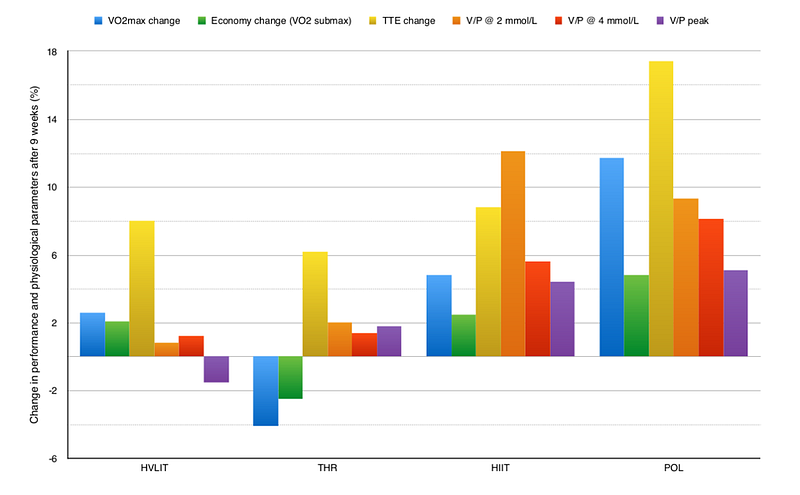
Summary of Training Effects 
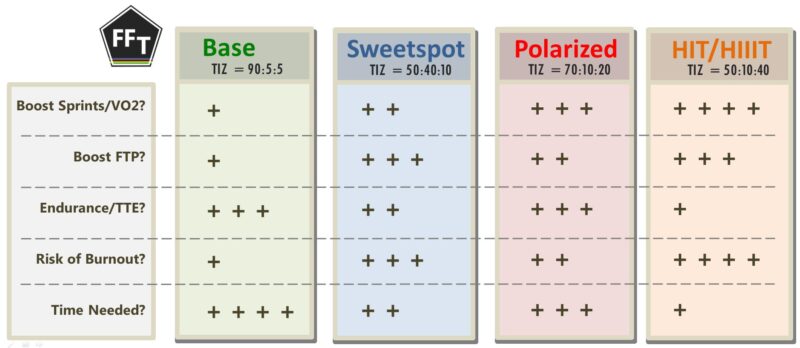
When you ask how should I improve my FTP, perhaps you should be asking how can I improve my power-curve and my recovery ability instead? If you only want to boost your FTP then any training except pure Base training will likely help. Now you understand each type of training, you can match it with your objectives:
HIT = good gains but long term risks burnout or overtraining
Sweetspot = boosts FTP but overall gains are modest
Polarized = good gains and low risk of overtraining
Base = Helps endurance, and low risk of overtraining but time-intensive
Recommendation 
If you want a personalized recommendation which training plan to follow and when, then try this calculator fft.tips/tpp

